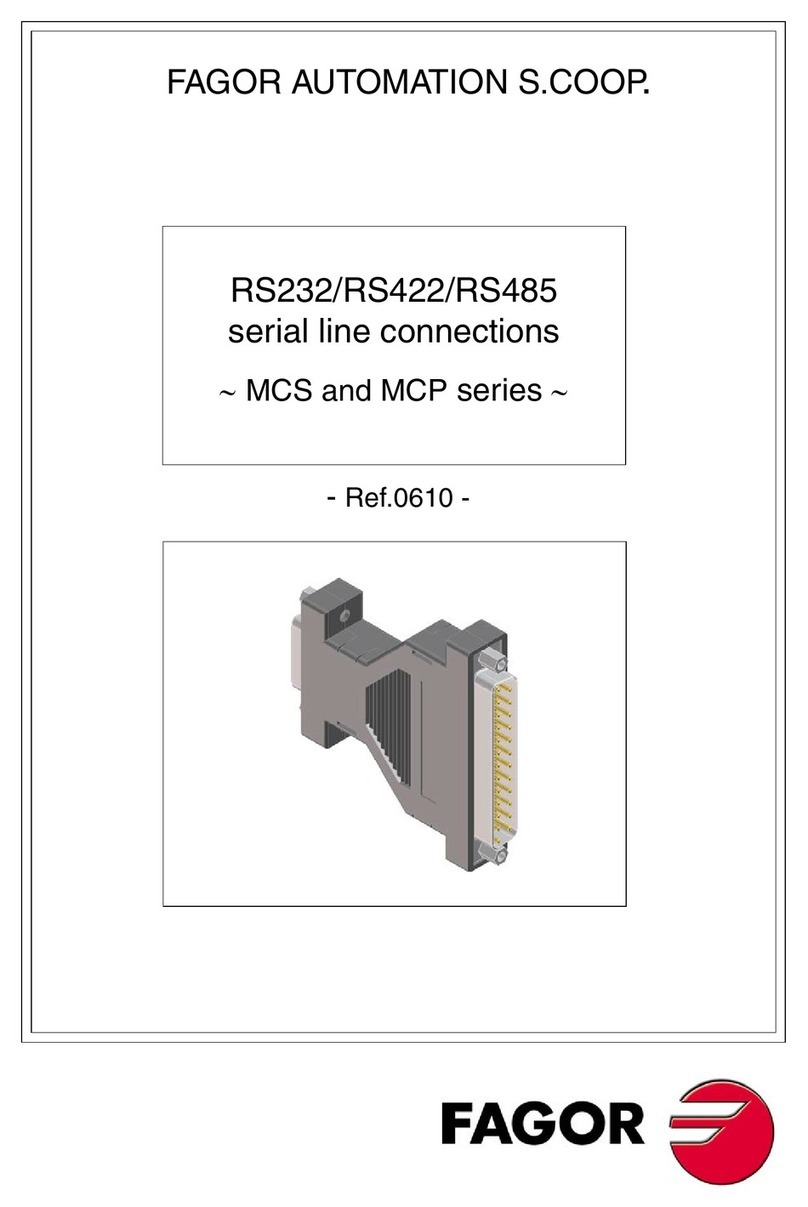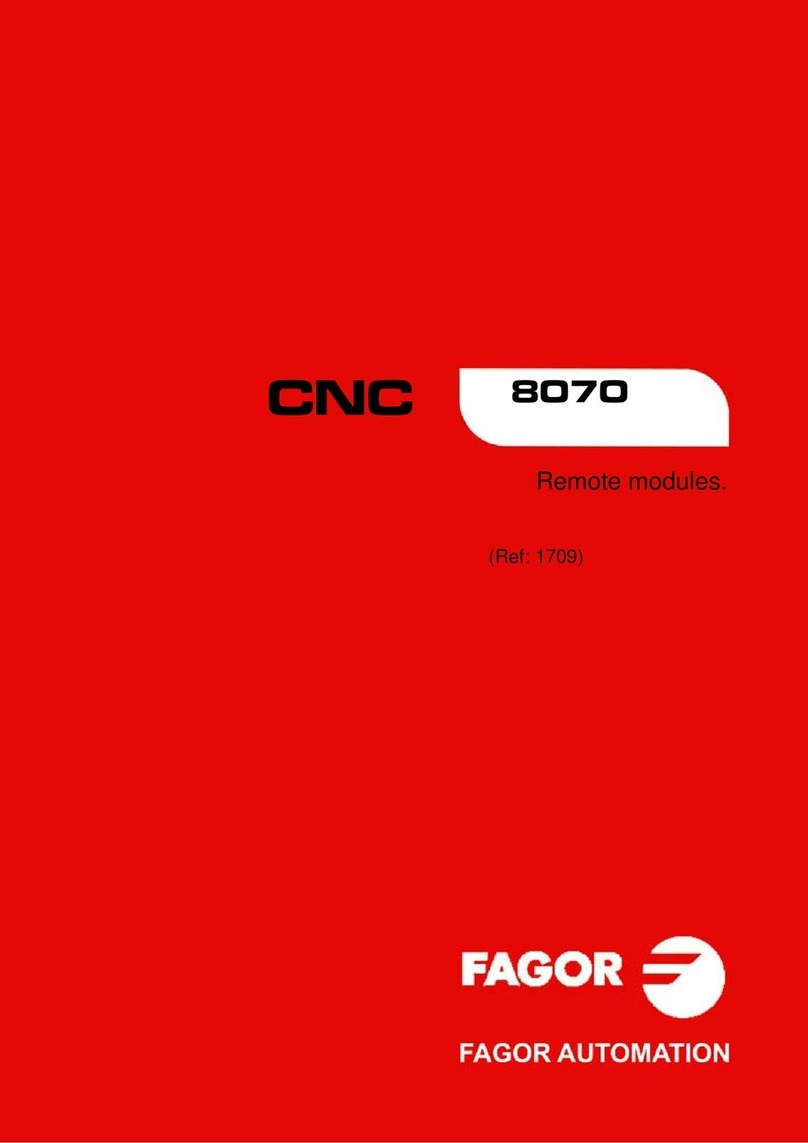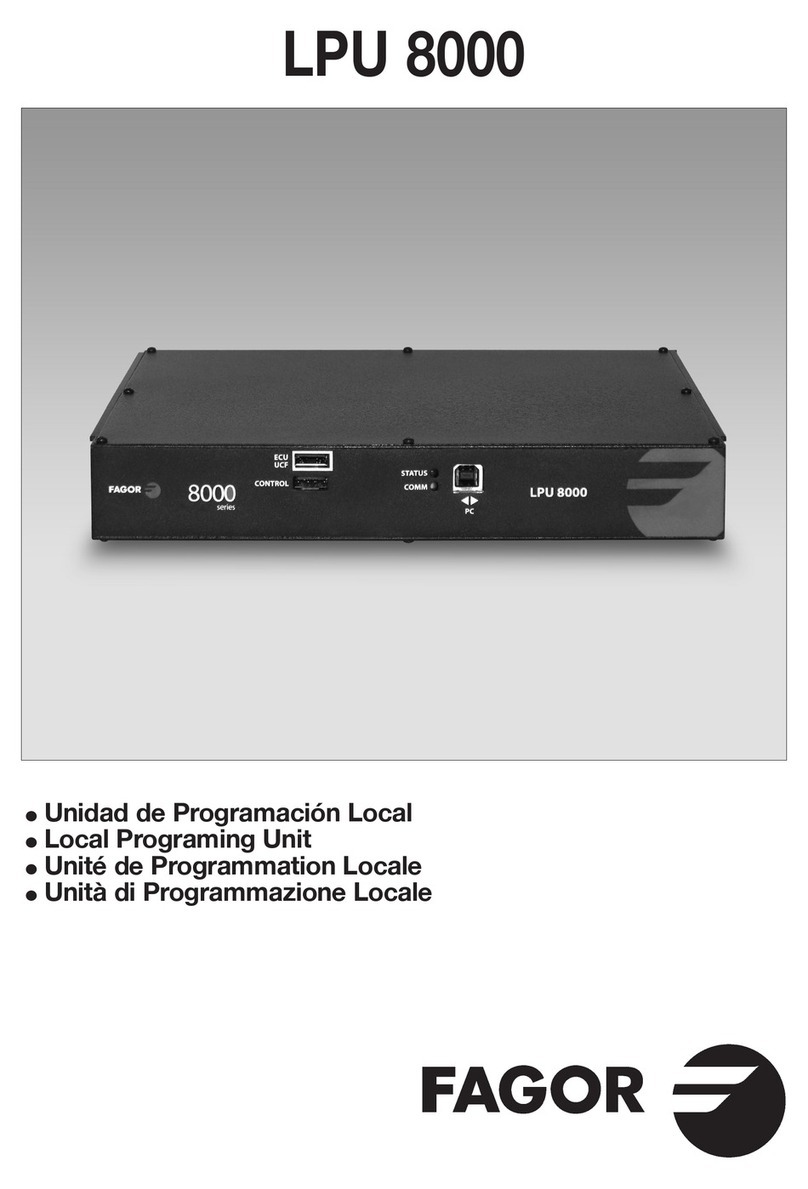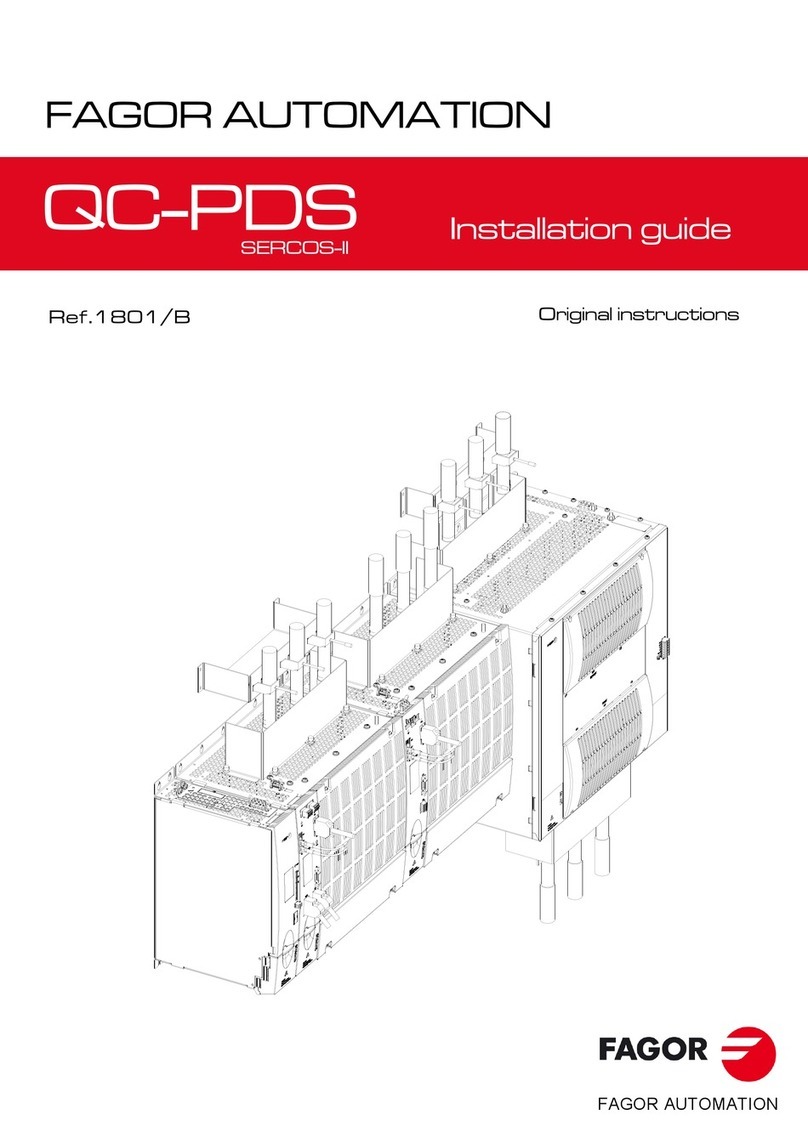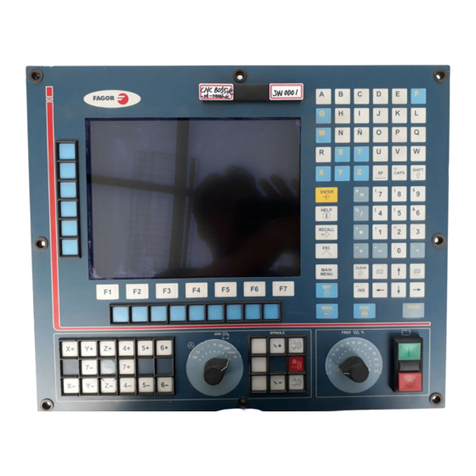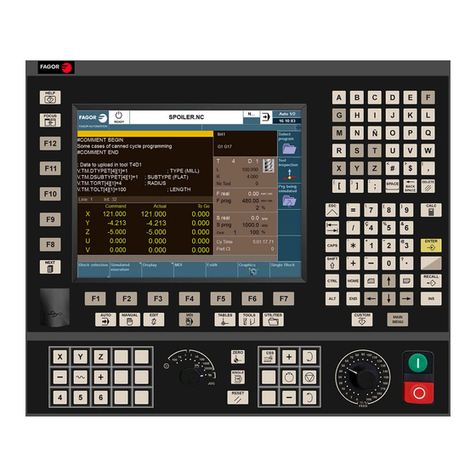
Remote modules. RIO5, RIOW and RIOR series.
CNCelite
8058 8060
8065 8070
ꞏ8ꞏ
REF. 2107
SOFT i4.0 CONNECTIVITY PACK Options for Industry 4.0 connectivity. This option provides
various data exchange standards (for example, OPC UA),
which allows the CNC (and therefore the machine tool) to
be integrated into a data acquisition network or into a MES
or SCADA system.
SOFT EDIT/SIMUL Option to enable edisimu mode (edition and simulation)
on the CNC, which can edit, modify and simulate part
programs.
SOFT DUAL-PURPOSE (M-T) Option to enable the dual-purpose machine, which allows
milling and turning cycles. On Y-axis lathes, this option
allows for pockets, bosses and even irregular pockets with
islands to be made during milling cycles. On a C-axis mill,
this option allows turning cycles to be used.
SOFT TOOL RADIUS COMP Option to enable radius compensation. This
compensation programs the contour to be machined
based on part dimensions without taking into account the
dimensions of the tool that will be used later on. This
avoids having to calculate and define the tool paths based
on the tool radius.
SOFT PROFILE EDITOR Option to enable the profile editor in edisimu mode and in
the cycle editor. This editor can graphically, and in a
guided way, define rectangular, circular profiles or any
profile made up of straight and circular sections an it can
also import dxf files. After defining the profile, the CNC
generates the required blocks and add them to the
program.
SOFT HD GRAPHICS
In a multi-channel system, this feature requires the MP-
PLUS (83700201) processor.
High definition solid 3D graphics for the execution and
simulation of part-programs and canned cycles of the
editor. During machining, the HD graphics display, in real
time, the tool removing the material from the part, allowing
the condition of the part to be seen at all times. These
graphics are required for the collision control (FCAS).
SOFT IIP CONVERSATIONAL The IIP (Interactive Icon-based Pages) mode, or
conversational mode, works with the CNC in a graphical
and guided way based on predefined cycles.
There is no
need to work with part programs, have any previous
programming knowledge or be familiar with Fagor CNCs.
Working in conversational mode is easier than in ISO
mode, as it ensures proper data entry and minimizes the
number of operations to be defined.
SOFT RTCP
This feature requires the MP-PLUS (83700201)
processor.
Option to enable dynamic RTCP (Rotating Tool Center
Point) required to machine with 4, 5 and 6 axis kinematics;
for example, angular and orthogonal spindles, tilting
tables, etc. The RTCP orientation of the tool may be
changed without modifying the position occupied by the
tool tip on the part.
SOFT C AXIS Option to enable C-axis kinematics and associated
canned cycles. The machine parameters of each axis or
spindle indicate whether it can operate as a C axis or not.
For this reason, it is not necessary to add specific axes to
the configuration.
SOFT Y AXIS Option to enable lathe Y-axis kinematics and associated
canned cycles.
SOFT TANDEM AXES Option to enable tandem axle control. A tandem axis
consists of two motors mechanically coupled to each
other forming a single transmission system (axis or
spindle). A tandem axis helps provide the necessary
torque to move an axis when a single motor is not capable
of supplying enough torque to do it.
When activating this feature, it should be kept in mind that
for each tandem axis of the machine, another axis must
be added to the entire configuration. For example, on a
large 3-axis lathe (X Z and tailstock), if the tailstock is a
tandem axis, the final purchase order for the machine
must indicate 4 axes.
Software option Description.












